Dust Off - Vietnam
The nature of the war in Vietnam was quite different to previous wars Australians had been involved in. Something new was the widespread use of medical helicopters to evacuate the wounded. This resource explores their use and the experience of wounded Australians returning home.
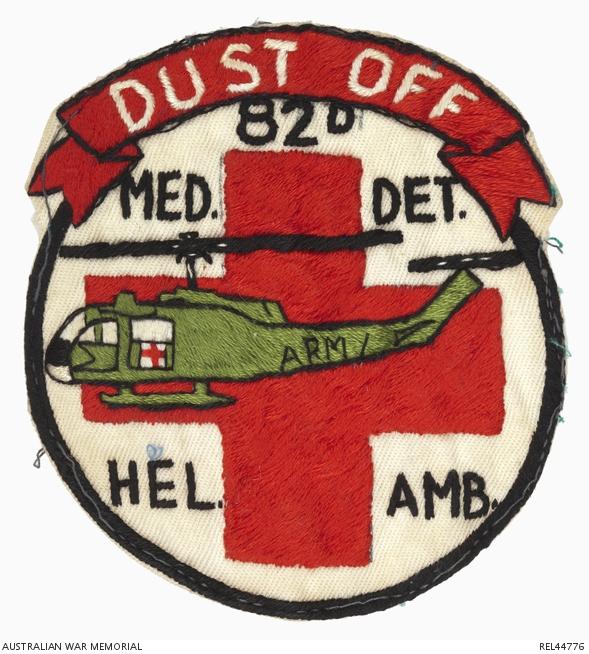
Patch of the 82nd Medical Detachment Helicopter Ambulance patch
Question 1
This silent film clip, produced during the war, shows the "dust-off" helicopter evacuation process and following medical treatment.
-
Looking at the clip, what were two key factors in the dust-off process that helped save so many Australian lives?
-
Who do you think this video was produced for? Why?
-
How would this affect what was shown in the video?
Question 2
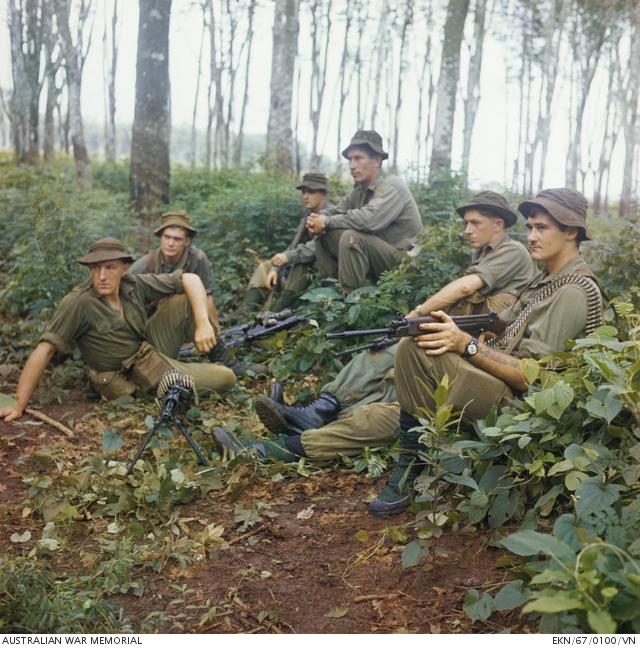
Australian troops wait through a tropical downpour at their base camp at 1st Australian Task Force (1ATF) at Nui Dat, South Vietnam, 1967.
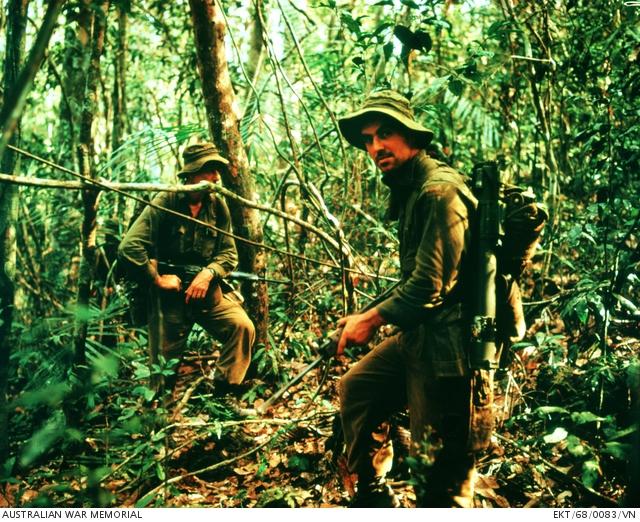
Bien Hoa, South Vietnam. January 1968. Australians on patrol in jungle during Operation Coburg.
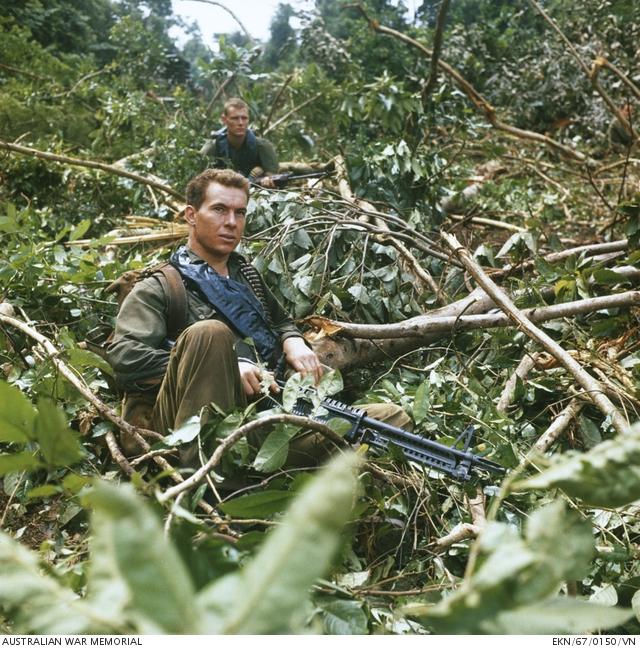
South Vietnam, 1967. Private Keith Craven, an M60 machine gunner with Fire Assault Platoon, Support Company, 7th Battalion, The Royal Australian Regiment (7RAR), pauses momentarily in the jungle during Operation Forrest.
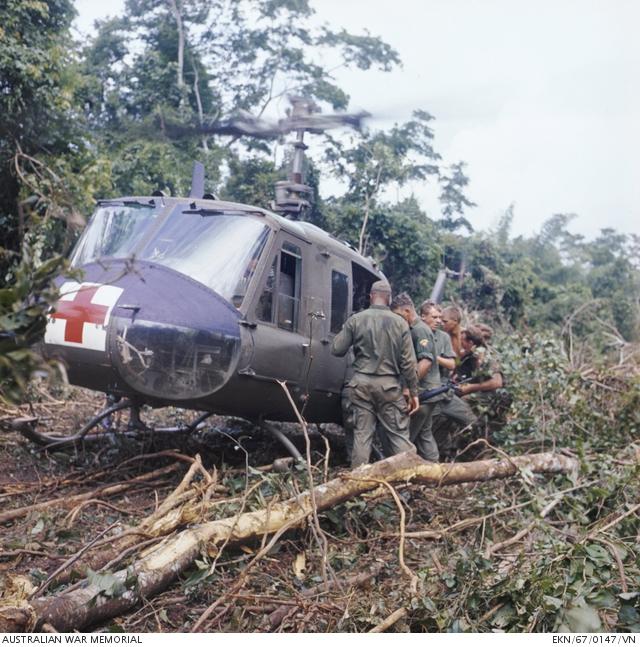
South Vietnam. 1967. An American medical evacuation 'dustoff' helicopter takes aboard a casualty during operations in the jungle.
-
What else can you find out about the climate of Vietnam? How does it differ to Australia?
-
What would be some of the challenges for the crews of the medical helicopters working in this kind of country?
-
What risks did it create for the soldiers on the ground?
-
Find out some of the other uses for helicopters in Vietnam.
Question 3
Many of the Australian casualties being evacuated were victims of landmines – explosive devices hidden in the ground. The famous Australian song I Was Only Nineteen describes an incident in which Australian Frank Hunt was wounded by an M16 'jumping jack' mine on a particularly significant day in 1969: "Frankie kicked the mine the day that mankind kicked the moon."
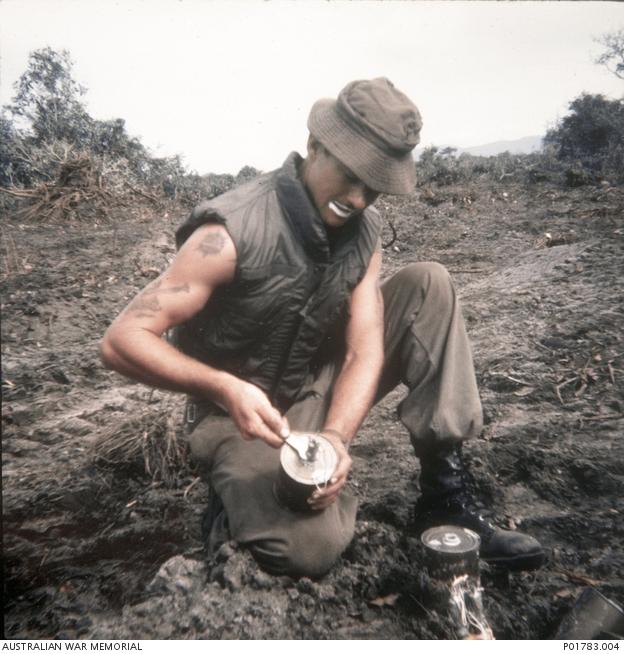
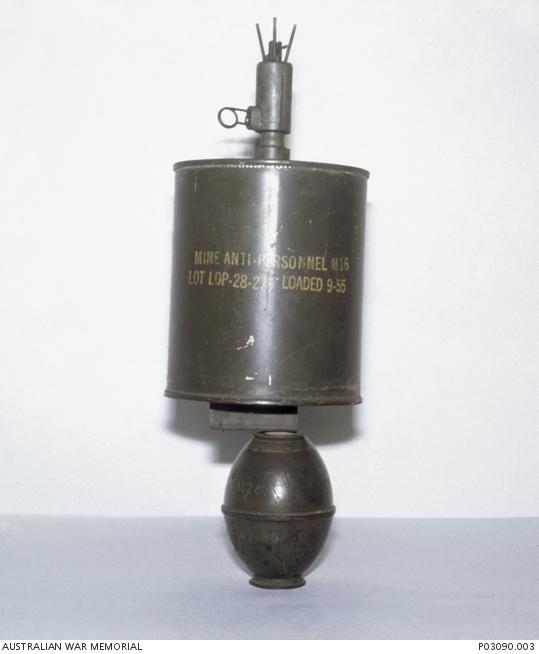
-
How had the Viet Cong acquired these American 'jumping jack' mines? Read the story behind the "Barrier Minefield" and summarise your findings.
-
Why were they called 'jumping jacks'?
Question 4
Telegrams would be sent back to Australia notifying relatives that their loved one had been wounded. This one was sent to the wife of Graham Edwards. Graham lost both his legs to the same kind of 'jumping jack' mine, and only survived because of a dust-off helicopter.
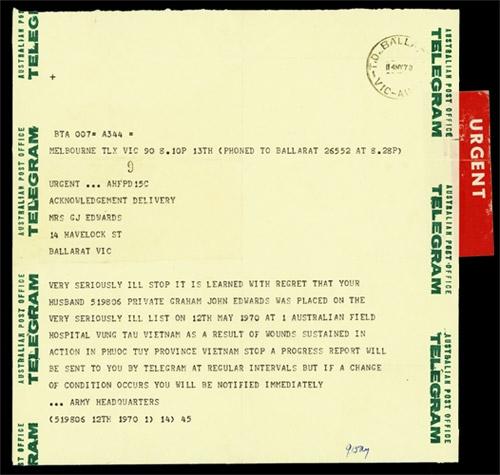
Graham Edwards's wife received this telegram advising of his wounds.
-
What supports or benefits existed for wounded Australians returning from Vietnam?
-
You may wish to use this website for information.
-
Question 5
With the sources below, and your own knowledge, answer the following:
-
How did attitudes to returning veterans differ during and immediately after the war?
-
Why did it take so long for Australia to 'welcome home' its veterans from Vietnam (in 1987)?
-
This website may help with your research.
-
Source 1: Quote from David Clifton after leaving the army:
Back home you don't publicize the fact that you were in Vietnam, as, in discussing the war you could either be praised for keeping the 'commies' at bay or accused of being a baby killer. It's a lot easier to avoid the subject. The anti-war movement is beginning to gain momentum; the 'All the Way with LBJ' sentiment of a few years earlier is turning sour. —Impressions: Australians in Vietnam - Quotes
Source 2: Account of 7RARs march following their return from Vietnam:
The battalion marched through Sydney ... enthusiastically cheered by the crowd and showered with confetti. ... The march through the city was an important ceremony for many soldiers, particularly those being discharged from the Army soon afterwards. ... It was a great pity that only a small proportion of the National Servicemen who served on the tour of duty took part in the march. Many had already been discharged and were not recalled for the march.
